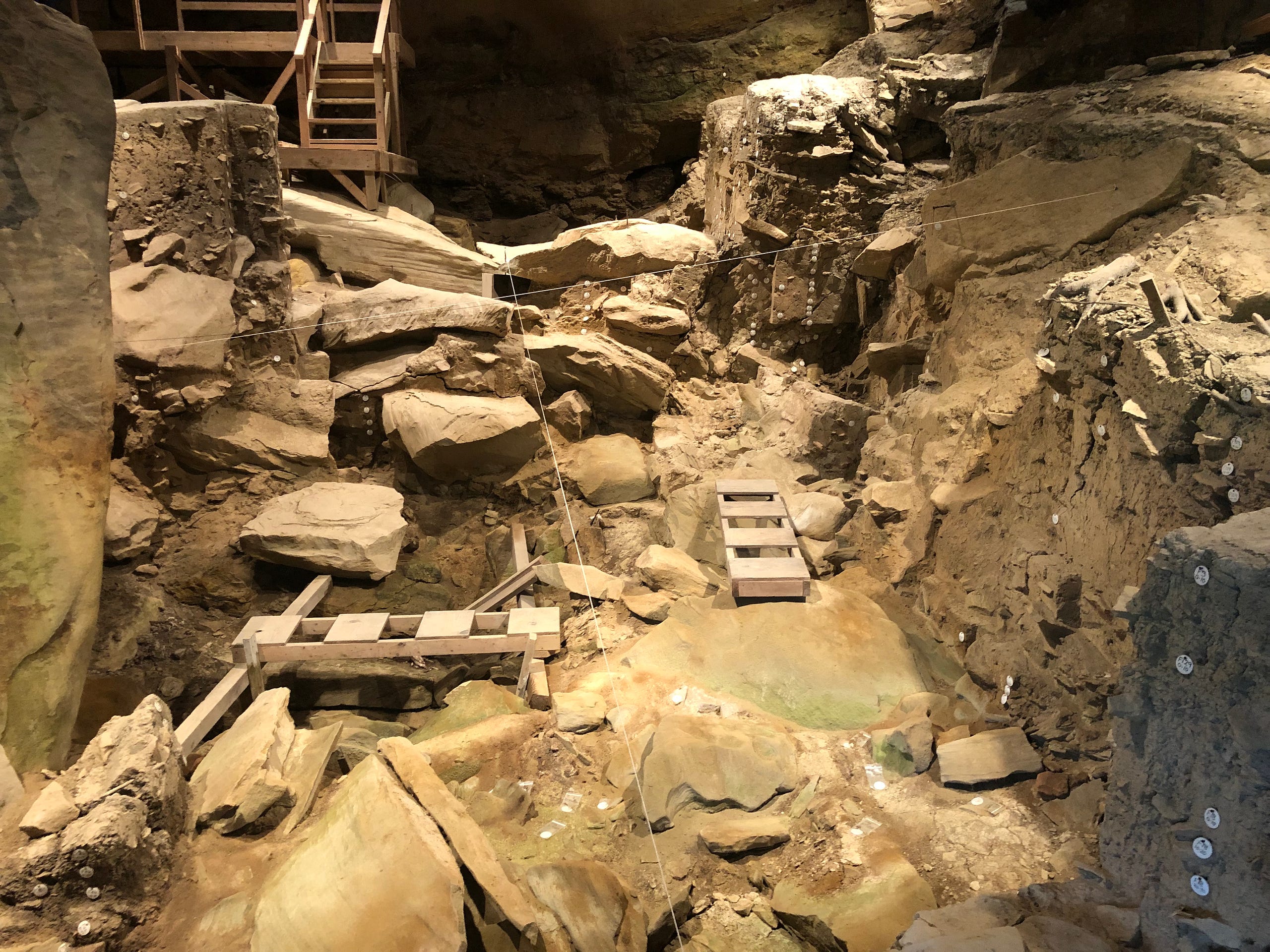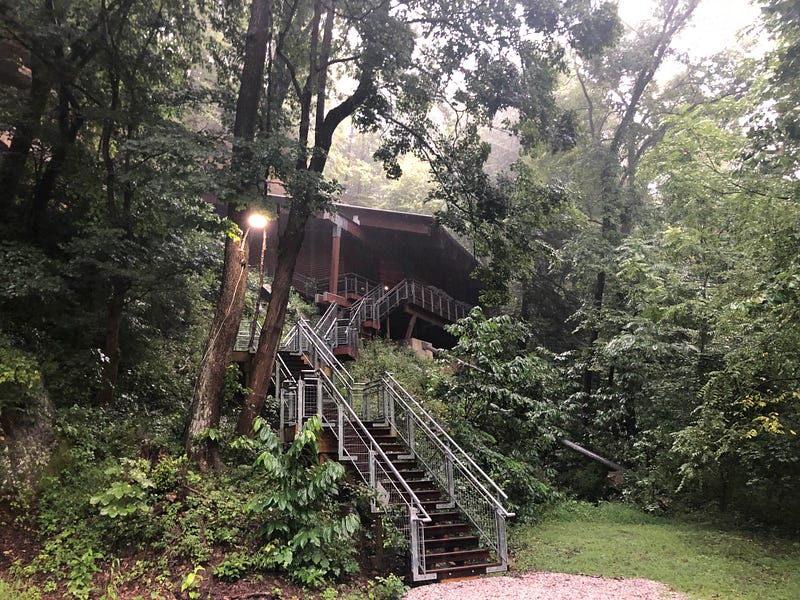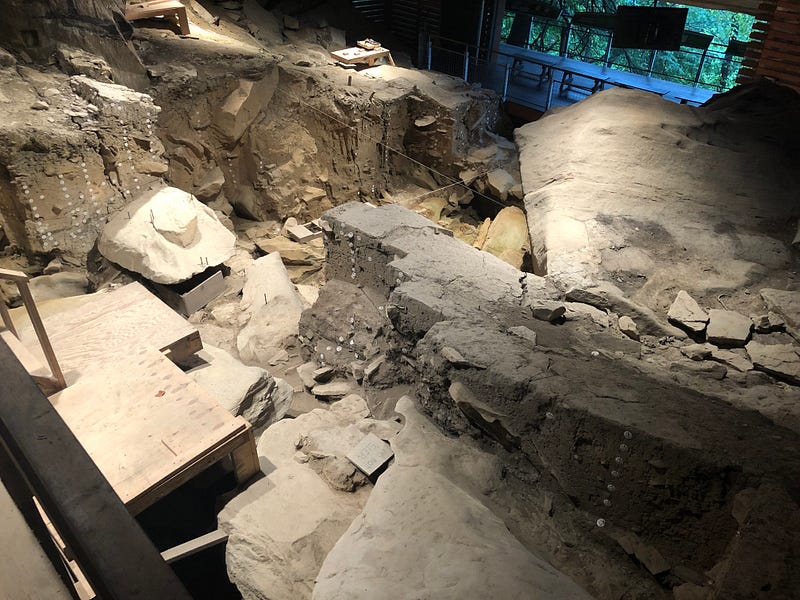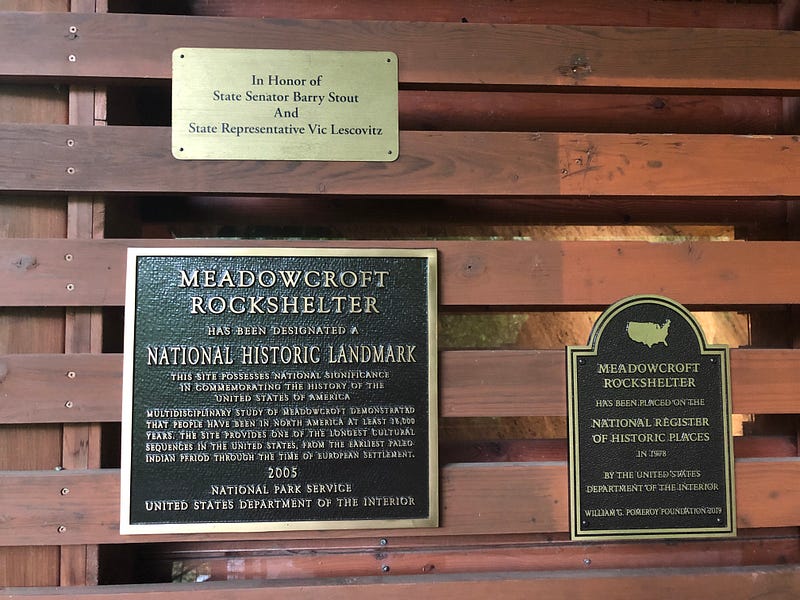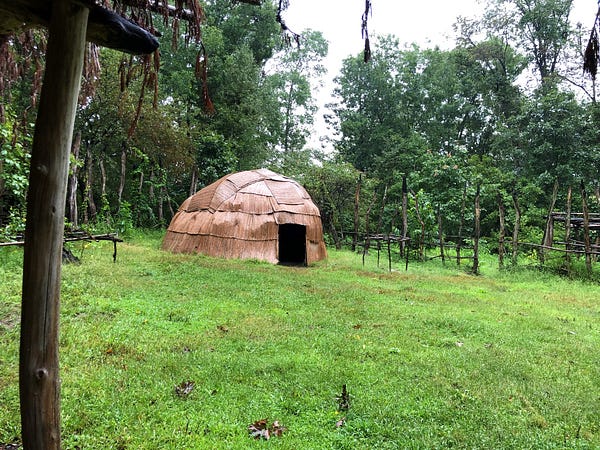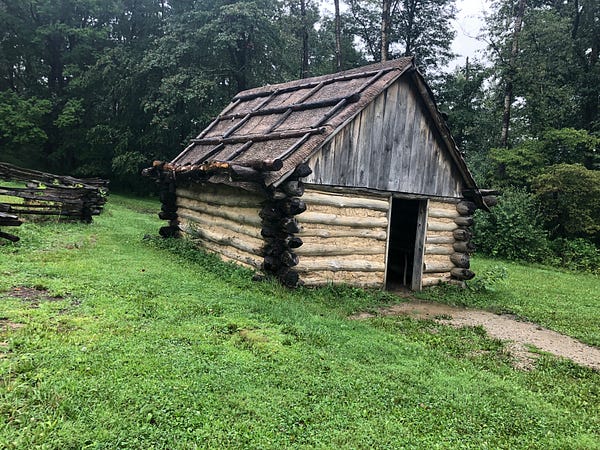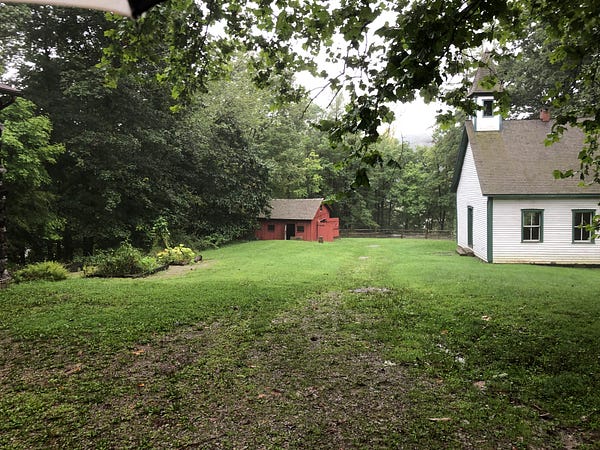Witness History Rewritten at Meadowcroft Rockshelter
Recently, 21- to 23-thousand-year-old footprints discovered in New Mexico reignited the dogmatic debate in archaeology over when the first humans arrived in North America. (See Science: https://www.science.org/doi/10.1126/science.abg7586).
Evidence overturning traditional theories has been piling up for about fifty years. But some old archaeologists stubbornly cling to earlier interpretations with a viciousness leading a New York Times article on their stance and practices to be titled “Archaeology As Blood Sport”.
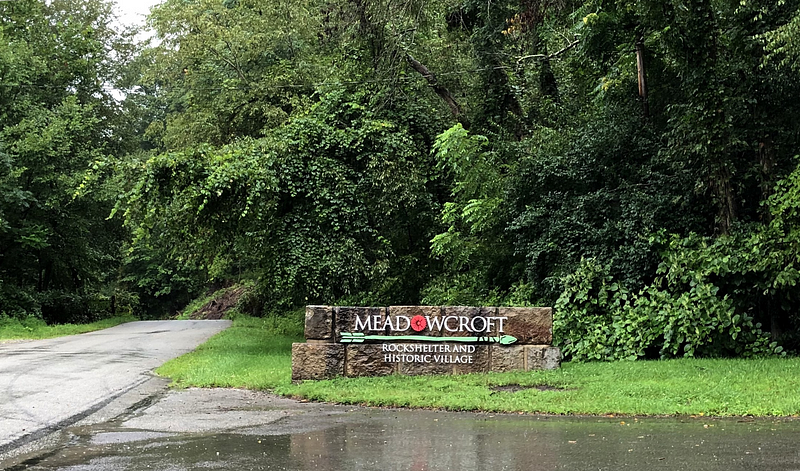
Which may be why this site of an amazing discovery — the Meadowcroft Rockshelter in Avella, in southwestern Pennsylvania near the Ohio border, about 30 miles south of Pittsburgh — isn’t as well-known as it perhaps should be, even though it’s open to the public, for you to see for yourself.
The site is preserved as it was left after Dr. James Adavasio and colleagues from the University of Pittsburgh conducted their main dig here in the 1970s.
Some smaller investigations have been conducted here since. A portion of the site has also been left unexcavated, allowing for future work.
A beautiful shelter built in the early 2000s covers the rockshelter to help preserve it, though of course it does obscure the original, natural appearance of the ridge.
Adavasio and company conducted a meticulous dig. The remains were carefully handled and catalogued.

The tags you see in these photos indicate different strata or “dirt horizons”, if you will, each indicative of a number of years. Digging down, you’re digging back through time, layer by layer.
Traditionally, North American archaeology held to the Clovis First theory, where the first humans entered North America over a land bridge from Siberia across what’s now the Bering Strait 13 to 14,000 years ago. Clovis refers to a type of well-crafted projectile point which features a flute or a central groove. The Clovis people were likely big game hunters, after mastodons and such.
At Meadowcroft Rockshelter, as they dug below the Clovis era’s dirt horizon they found more and more remains. Tools and traces of human activity were found dating back 19,000 years. What’s more, this site held an incredible archaeological record of continuous occupation over thousands and thousands of years. The remains found also curiously demonstrated these were not big game hunters like the Clovis people.
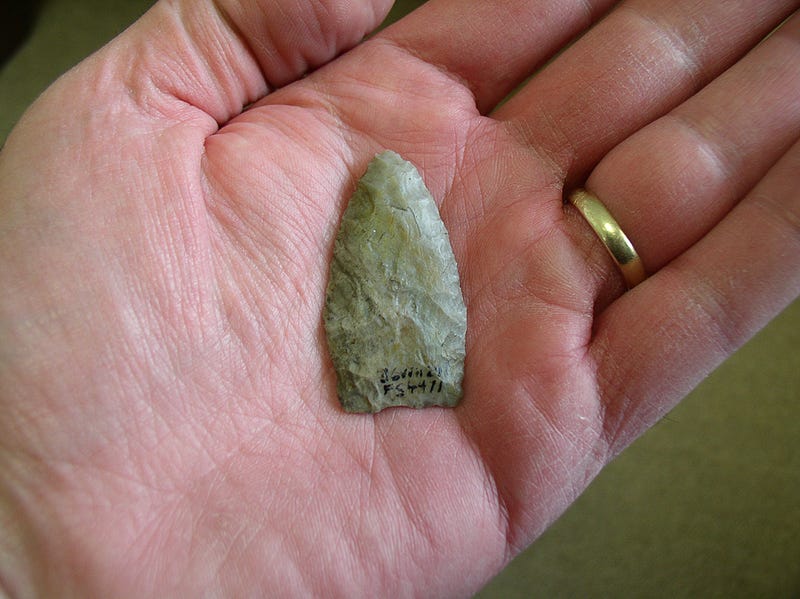
One pre-Clovis projectile point discovered was dubbed the Miller Lanceolate Point, after Albert Miller, whose family owned this land since 1795 — and who discovered the rock shelter and preserved it.
The discoveries here at Meadowcroft Rockshelter rewrite history — or would if older North American archaeologists didn’t cling to the Clovis First theory like dogma. Those in archaeology who challenged Clovis First used to find themselves ostracized and driven from the field. Often brutally — thus “Blood Sport”.
Because of this, the discoveries here — as meticulous and thoroughly documented as they are — have not yet been universally accepted. Some of the critiques leveled against the early dating here — met and answered, by the way — have inspired those working since, in other locations, to preemptively test against the possible contaminants the old men argue skew the Meadowcroft Rockshelter dates.
They did this with those recent discoveries of human footprints in New Mexico, for example.
The Meadowcroft Rockshelter is just up the hill from Cross Creek, which runs into the Ohio River. Those who frequented this shelter likely used the waterways to travel. Among the many remains found here were seashells from the Atlantic Coast.

In fact, this rockshelter likely wasn’t a long-term residence, but a stopover for travelers — a roadside motel, open for 18,000 years or more. The range of places of origin for the artifacts discovered demonstrates quite a mobility.
This could be the oldest known site of human habitation in North America. There are other pre-Clovis sites in the Americas, now, most prominently Monte Verde in Chile. Pre–Clovis North American sites include Cactus Hill in Virginia and Topper in South Carolina, among several others. There are likely more left undiscovered, as the Clovis First assumption meant most archaeologists simply did not dig any further down.
Meadowcroft Rockshelter is a National Historic Landmark.
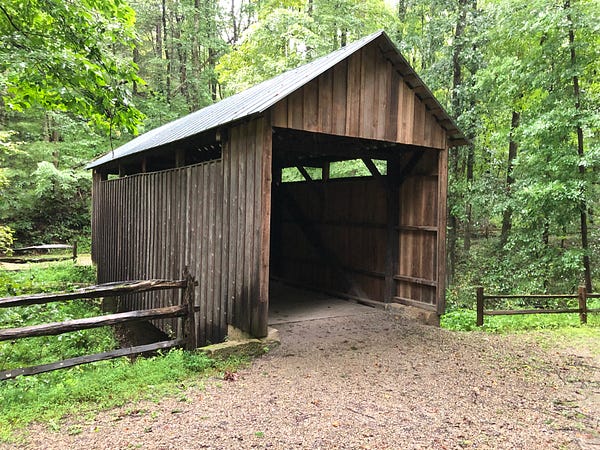
The Senator John Heinz History Center of Pittsburgh, part of the Smithsonian, runs the site, which also includes the old Miller farmland, where there are three recreated historical settings: A pre-contact, 1570’s era Monongahela Indian village, an 18th century Trading Outpost, and a 19th century Rural Village with a church, school and blacksmith shop. There’s a Miller Museum, with exhibits on harness racing, barns and farm implements, and carriages. The Pine Bank Covered bridge is also on-site.
Though some in archaeology still deny the reality of pre-Clovis discoveries, as more and more occur their stubborn resolve becomes less and less tenable.
As one of the first, and possibly oldest pre-Clovis sites in North America, the findings at Meadowcroft Rockshelter are vindicated by each new discovery. And best of all, despite the dying skepticism, the site is being preserved, so you can see this history for yourself.

There is also a ten minute video of this Experience at Meadowcroft Rockshelter by Mike Luoma on YouTube: https://youtu.be/I_NZ1BmWuk4.


